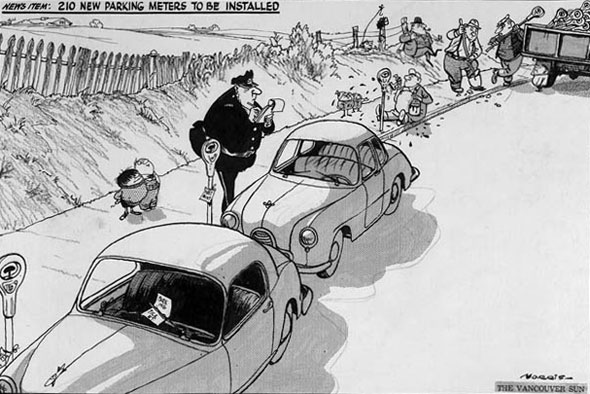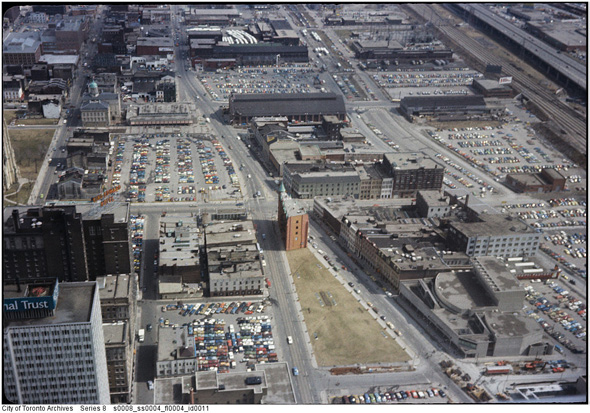
How pay parking came to Toronto
Congratulations, Toronto. You've been feeding coins into parking meters for just over 63 years. On February 6, 1952, the first 11 curb parking meters were installed on the west side of James St. between Old City Hall and present-day Eaton Centre.
Within a week, 1,300 would be installed downtown between Dundas, Simcoe, Front, and Jarvis. The fee was 10 cents for 30 minutes or an hour, depending on the location.
The city's decision to install parking meters was a controversial one. Newspaper editorials decried turning downtown streets into parking lots.
"The essential need in a city like Toronto is to facilitate the movement of traffic," the Globe and Mail wrote. "What is required is the progressive removal of parking from downtown streets ... a policy to bring this about is long overdue."
"The function of the streets is primarily to carry traffic and not to provide parking spaces," wrote columnist Frank Tumpane. The TTC was likewise opposed to the idea. Chairman William McBrien said the meters would lead to increased traffic congestion and slower bus and streetcar service.
Nevertheless, the plan went ahead, initially on a trial basis. A variety of devices from six companies were rigorously tested by the city. Salt sprays mimicking the slush kicked up by passing vehicles, ice cold and boiling hot temperatures - even a smack from a 2-kg lead ball were directed at the clockwork devices.
Only models that passed the battery of tests were considered for the contract, which was eventually won by Park-O-Meter Co. Ltd. of Main St., Toronto.

The money raised from the meters was to be put into a city fund for buying off-street surface parking lots. Police would patrol the parking bays, issuing $2 fines to overstayers and scofflaws. The first collection a month later yielded $1,605 - equal to 16,060 dimes, although a few enterprising crooks used slugs or paper clips to get free parking.
Others used craftier methods of dodging fines. Tickets were torn up because drivers variously claimed they were making emergency visits to hospitals, collecting payroll from a bank, and delivering heavy equipment. One cancelled ticket had the name of a Supreme Court judge on the back and no other explanation.
The cartoon above, printed in the Vancouver Sun in 1954, captured the feelings of drivers across the country who felt they were being unfairly charged for using public roads. Numerous cities across Canada saw fees introduced for on-street parking in the 1950s, too. Edmonton got devices that doubled as engine warmers during the night.

Within a year, downtown parking meters were taking in $18,000 a month. Using that money, the first Parking Authority of Toronto multi-storey lot was built over the subway tracks between Charles and Hayden streets, just south of Bloor station. By 1953, there were five municipal lots over the subway between Maitland and Hayden streets with room for 420 vehicles.
The Toronto Parking Authority has grown to be the largest municipal parking provider on the continent, operating more than 17,500 metered spots in the city. Most cost more than a dime.
Chris Bateman is a staff writer at blogTO. Follow him on Twitter at @chrisbateman.
Images: Library and Archives Canada, Acc. No. 1988-243-23, City of Toronto Archives. Top photo by Gadjo Sevilla in the blogTO Flickr pool.
Latest Videos
Latest Videos
Join the conversation Load comments







